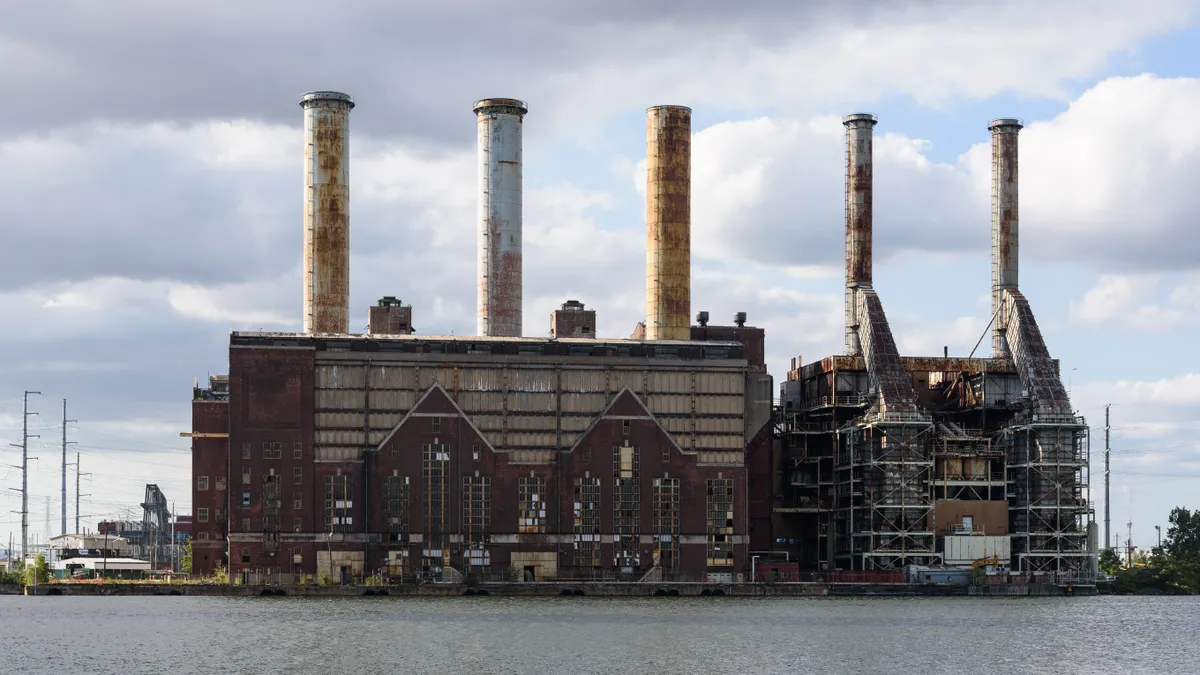Dive Brief:
- Nearly $16 billion in investments could be stranded in the U.S. and Europe if gas-fired assets are closed on the timeline required to achieve net-zero emissions by 2050, according to a new report from independent financial think tank Carbon Tracker. This includes more than $10 billion of investment in Europe and $5.8 billion in the U.S.
- According to the report, renewables paired with storage will become cheaper to run than the majority of existing gas plants by the end of the decade, as new solar, wind and battery capacity become increasingly competitive.
- “Europe is aiming for net-zero by 2050, but plans for how we tackle unabated gas are still pretty unclear across the continent. And in the U.S., I think we’ve had so much focus on coal for so long … but the focus needs to move on to gas pretty quickly, if long-term climate targets are to be achievable,” said Jonathan Sims, report co-author and a senior analyst with Carbon Tracker.
Dive Insight:
The report, published this week, is the first in a series from Carbon Tracker that takes a closer look at global long-term investments in gas-fired power plants. The group studied the financials of 835 gas-fired power generating units in Europe and around 2,200 individual units in the U.S., amounting to 189 GW and 513 GW of capacity, respectively. It notes that for owners of profitable gas plants, the potential that units will be forced to close earlier than planned due to net-zero emissions targets brings with it “significant levels of stranded asset risk.”
The report estimates that around half of operating gas plant capacity included in its model in Europe will be more expensive to run than wind or solar capacity coupled with battery storage by 2023, and 85% by the end of the decade. This process will take longer in the U.S., it found -- by the early 2030s, around half of the country’s gas plant capacity is estimated to be more expensive to run than renewables and batteries.
Gas continues to have a role in the energy transition, the report acknowledges — “but investors should not be fooled into believing that the fuel will be immune to the economic challenges facing coal and lignite within the power sector.”
The report found that while approximately $16 billion could be stranded if profitable gas-fired units are forced to close down, an additional $16 billion could actually be saved by shuttering loss-making gas plants in line with a net-zero 2050 target — $8 billion in Europe and $7.9 billion in the U.S. In terms of new build gas capacity, the report estimates that some $24 billion in investments in new gas plants in the U.S. is at risk, with $3.7 billion in Europe.
“The global way of thinking is let’s move on from fossil fuels to renewables,” said Nicolás González-Jiménez, data scientist consultant with Carbon Tracker. “But now we have the numbers to back up what we’re trying to show.”
The report doesn’t completely write gas off, Sims noted, and acknowledges that a handful of units may be required to sit idle and be called upon for emergency short-term supplies when needed.
“We think this needs to be a fairly limited role, however, and limited to emergency reserve,” he added.
There are different regulatory tools available to policy-makers to address stranded assets, said Michael Colvin, director of regulatory and legislative affairs with the Environmental Defense Fund. In California, for instance, the thermal fleet is owned largely by independent power producers rather than regulated utilities, which means the regulatory obligation to deal with these assets essentially ends after the contract duration of a power purchase agreement. On the other hand, the pipeline network that feeds these generators is a different story, he said, because they are fully-regulated utility-owned assets.
According to Colvin, “the best way to avoid a stranded asset is to ensure that the asset can still be used and useful in some way… are there physical investments I could make to adapt my product to meet the new constraints?”
This could mean adapting a turbine to run on an alternate fuel, he noted, or installing storage on site.














